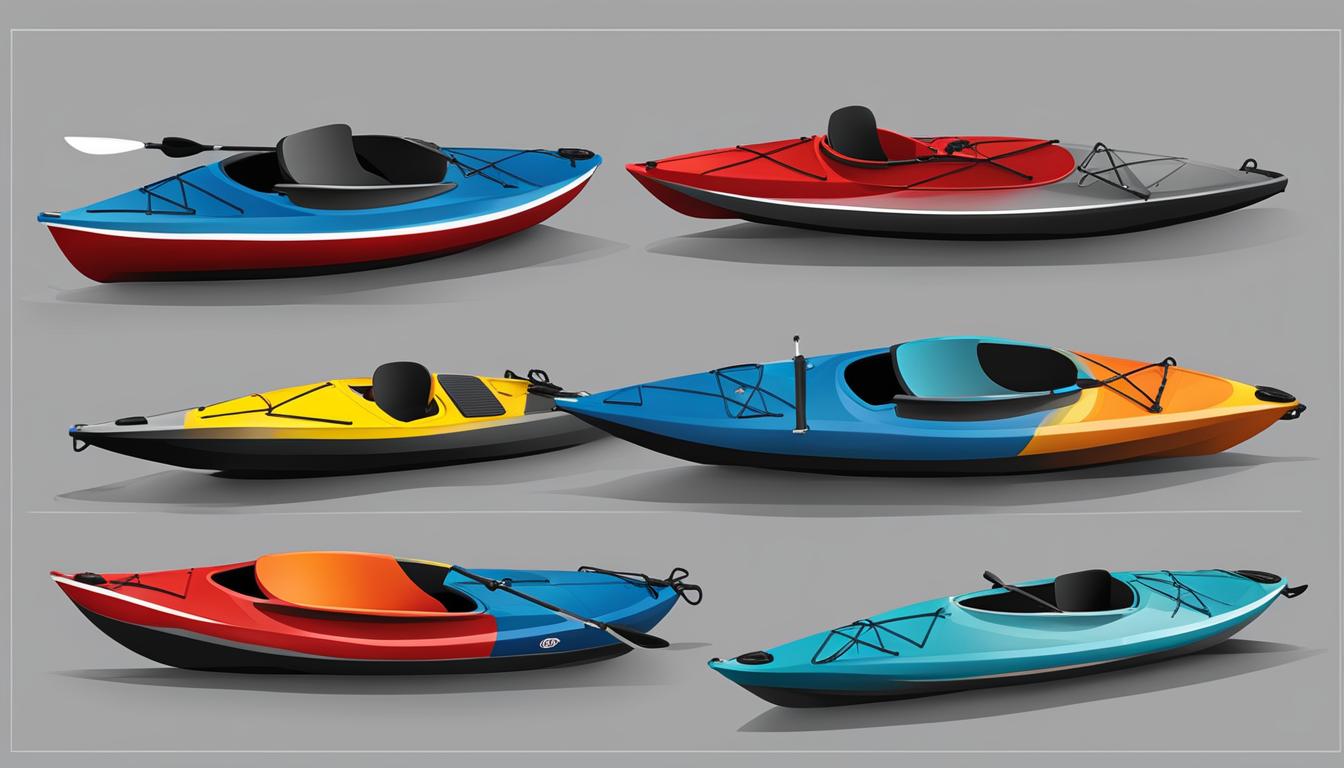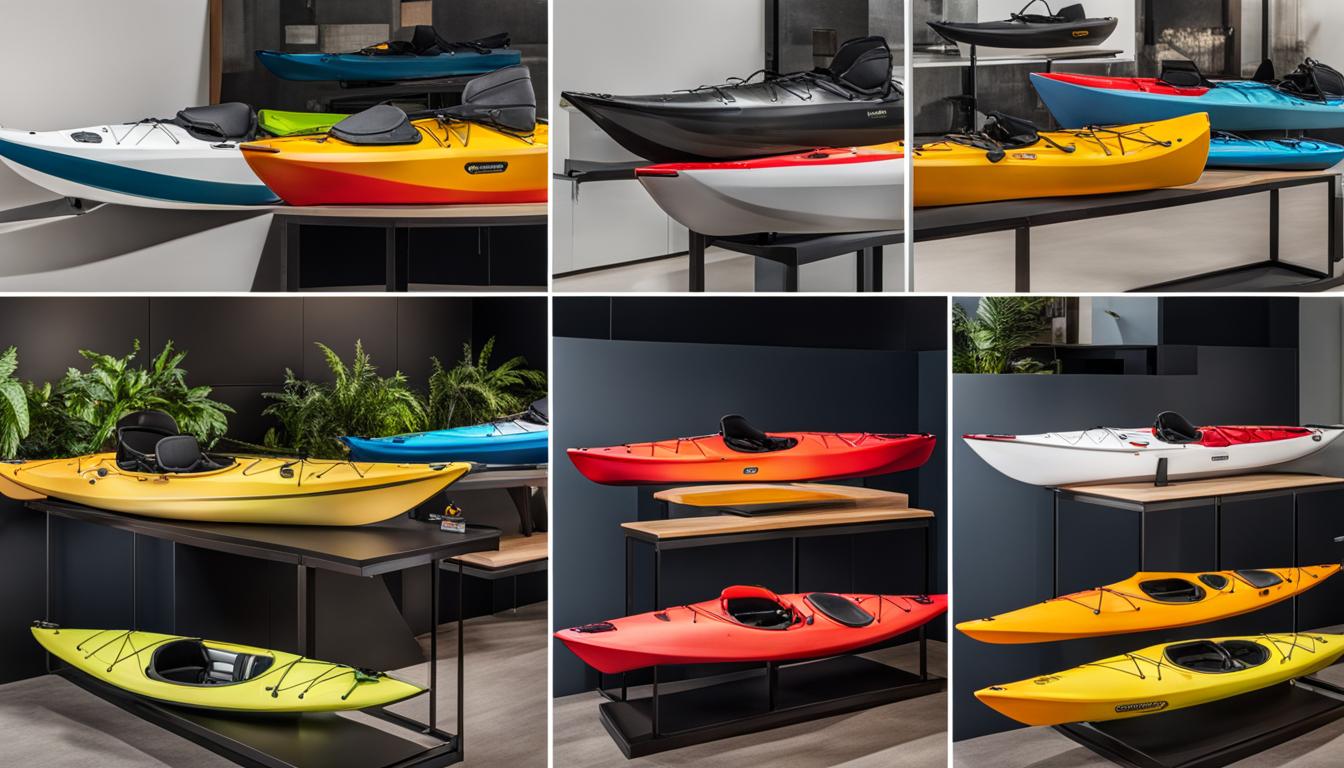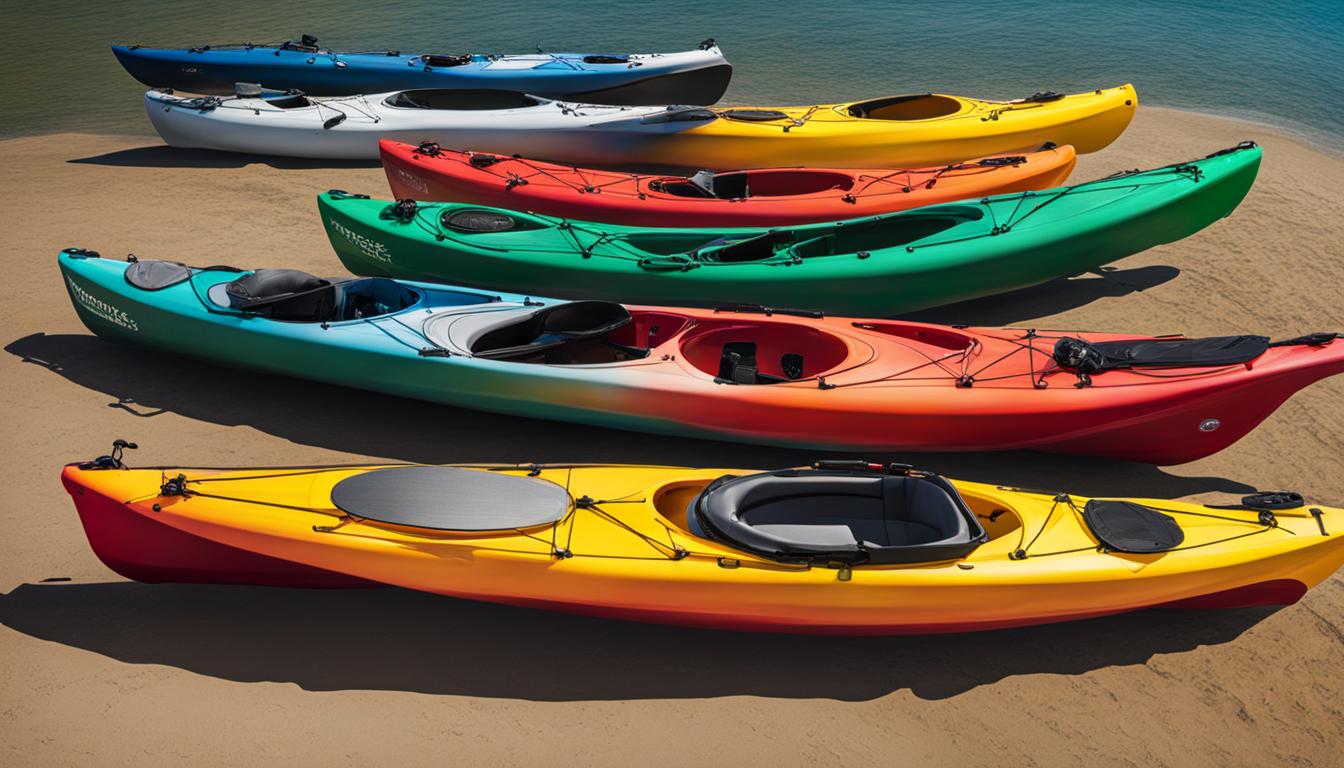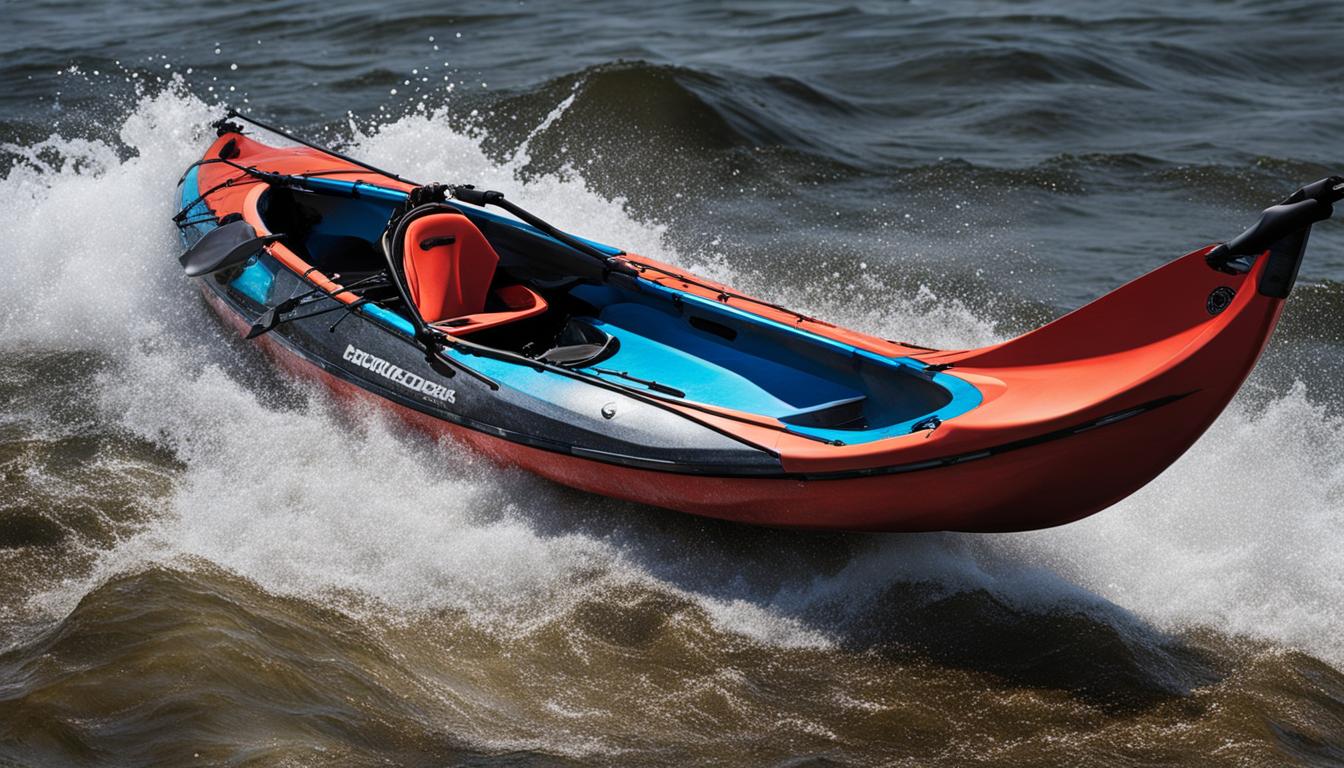When it comes to purchasing a kayak, you might find yourself wondering if the price tag truly reflects the quality of the product. Is a higher-priced kayak necessarily better in terms of performance and durability? In this article, we will delve into the kayak price-quality correlation and analyze whether high-priced kayaks truly offer superior quality compared to their more affordable counterparts.
Key Takeaways:
- Understanding the price-quality correlation in kayaks is essential for making informed purchasing decisions.
- High-priced kayaks do not always guarantee superior quality, while budget-friendly options can still provide satisfactory performance.
- Factors such as personal preferences, needs, and brand reputation should be taken into consideration when evaluating price and quality in kayaks.
- Valuing canoe and kayak rental businesses requires a comprehensive analysis of various methods, including the income approach, market approach, and asset approach.
- Market potential, competition analysis, revenue projections, and risk assessment are crucial factors to consider in valuing canoe and kayak rental businesses.
Factors Influencing Kayak Pricing
When it comes to determining the price of a kayak, several factors come into play. These factors can help consumers understand the price-quality correlation and make informed decisions when purchasing a kayak.
Quality of Materials
The quality of materials used in the construction of a kayak can significantly impact its price. Higher-quality materials, such as marine-grade polyethylene or fiberglass, are more durable and can withstand the elements better than lower-quality materials. While kayaks made from high-quality materials may come with a higher price tag, they often offer better performance and greater longevity.
Manufacturing Process
The manufacturing process also influences the price of a kayak. Kayaks that undergo more intensive manufacturing processes, such as hand-laid fiberglass or thermoforming, often have higher prices due to the labor and expertise required. These processes ensure better craftsmanship and result in higher-quality kayaks that are worth the investment for serious enthusiasts or professional paddlers.
Brand Reputation
The reputation of the kayak brand can also impact its pricing. Established brands with a reputation for producing high-quality kayaks may charge a premium for their products. These brands have invested in research and development, ensuring that their kayaks offer superior performance, innovation, and customer support. However, lesser-known brands may offer comparable quality at a lower price point, making them a viable option for budget-conscious buyers.
Understanding these factors can help consumers evaluate the price and quality of kayaks. It’s essential to consider personal preferences, needs, and intended use when making a purchasing decision. A higher-priced kayak may offer advanced features and better performance, but it’s important to assess whether these features align with your requirements. Likewise, a budget-friendly kayak can still provide satisfactory quality for recreational use or beginners. Ultimately, the right kayak is one that suits your needs and fits within your budget.
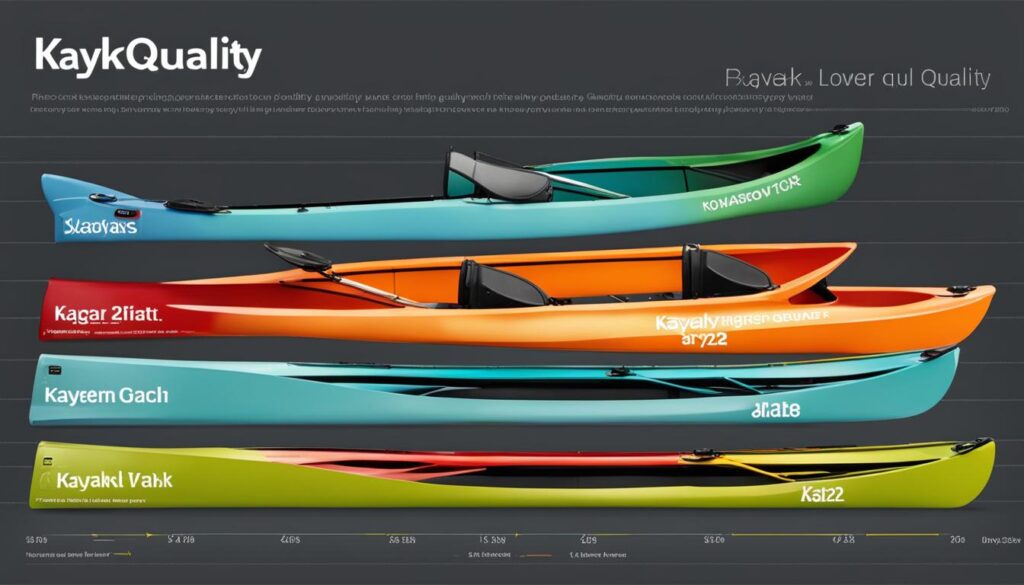
| Factors | Impact on Price |
|---|---|
| Quality of Materials | Higher-quality materials result in a higher price |
| Manufacturing Process | More intensive manufacturing processes lead to higher prices |
| Brand Reputation | Established brands with a strong reputation may charge a premium |
Evaluating Price and Quality in Kayaks
When it comes to evaluating the price and quality of kayaks, it’s important to consider your personal preferences and needs. Expensive kayaks may offer advanced features, better durability, and improved performance, making them worth the higher price for experienced or competitive kayakers. However, budget-friendly kayaks can still provide satisfactory quality for recreational users or beginners.
Before making a purchase, it’s advisable to read reviews and compare specifications to determine if the price aligns with the desired quality. Look for kayaks that have positive customer feedback regarding their performance, durability, and overall value. Keep in mind that the most expensive option isn’t always the best choice for everyone.
In terms of evaluating kayak quality, it’s crucial to consider factors such as the materials used, manufacturing process, and brand reputation. Higher-end kayaks often feature top-notch materials and construction techniques, resulting in enhanced performance and longevity. These kayaks may also come with additional accessories or innovative design features that can enhance the overall paddling experience.
| Kayak Price Range | Quality Features |
|---|---|
| Expensive | Advanced features, premium materials, superior performance |
| Budget-friendly | Basic features, satisfactory quality, suitable for recreational use |
It’s important to remember that the quality of a kayak is subjective and may vary based on individual preferences. While a high-end kayak may be worth the price for some, others may find that a budget-friendly option suits their needs just fine. Ultimately, the key is to find a kayak that meets your specific requirements and provides an enjoyable paddling experience.
Valuation Methods for Canoe and Kayak Rental Businesses
Valuing a canoe and kayak rental business requires a thorough analysis using different valuation methods. These methods take into account various factors such as the income generated by the business, the market comparables, and the value of its assets.
Income Approach
The income approach is one of the commonly used methods for valuing a canoe and kayak rental business. It focuses on assessing the future cash flows generated by the business. This approach considers factors such as the revenue from rentals, potential growth, operating expenses, and profitability. By estimating the future cash flows and discounting them to their present value, potential investors can determine the value of the business based on its income-generating potential.
Market Approach
The market approach involves comparing the canoe and kayak rental business to similar businesses in the industry. This method considers market data and trends, such as rental rates, customer demand, and overall industry performance. By analyzing comparable businesses and their sales prices, investors can gauge the value of the target business in relation to the market. This approach provides insights into the business’s competitive position and helps determine a fair market value.
Asset Approach
The asset approach focuses on evaluating the net value of the business’s assets. This method considers the value of the canoes, kayaks, rental equipment, and any other tangible assets owned by the business. It also takes into account intangible assets such as goodwill or intellectual property. The asset approach provides an estimation of the liquidation value or the value of the business’s assets if they were to be sold individually. This method is commonly used when there is no significant income or market data available for valuation.
When valuing a canoe and kayak rental business, it is important to consider a combination of these valuation methods. Each method provides a different perspective on the business’s value, allowing investors to make informed decisions. By carefully analyzing the income potential, market comparables, and asset value, investors and entrepreneurs can determine the fair value of a canoe and kayak rental business.
| Valuation Method | Key Factors Considered |
|---|---|
| Income Approach | Future cash flows, revenue, expenses, profitability |
| Market Approach | Comparable businesses, rental rates, customer demand |
| Asset Approach | Value of tangible assets, intangible assets |
Factors to Consider in Valuing Canoe and Kayak Rental Businesses
When valuing a canoe and kayak rental business, it’s crucial to analyze several factors that can significantly impact its worth. Conducting a market potential and competition analysis allows you to understand the demand for rental services and evaluate the competitive landscape. This analysis helps identify the business’s unique selling points, potential growth opportunities, and areas where it may face challenges.
An essential aspect of valuing a rental business is projecting its revenue and profitability. By analyzing historical financial data and considering market trends, you can estimate the business’s potential income and how it may perform in the future. This assessment provides valuable insights into the business’s financial health and growth prospects, influencing its overall value.
“Understanding the market potential and competition is crucial in assessing the value of a canoe and kayak rental business. By evaluating market demand and analyzing competing businesses, you can gain insights into the business’s growth potential and identify strategies to stay competitive in the industry”.
– Industry Expert
As with any investment, evaluating the risks associated with a canoe and kayak rental business is paramount. Conduct a thorough risk assessment to identify potential challenges and develop effective mitigation strategies. Consider factors such as seasonal fluctuations in demand, changing consumer preferences, and the potential impact of external events like natural disasters. Having robust risk mitigation measures in place can enhance the business’s value and provide reassurance to potential investors.
Market Potential and Competition Analysis
An in-depth market potential and competition analysis involves assessing the size of the target market, identifying customer segments, and understanding their preferences and needs. Additionally, analyzing the competitive landscape helps identify the strengths and weaknesses of competing rental businesses. By evaluating their pricing strategies, service offerings, and customer reviews, you can determine how your rental business compares and identify opportunities for differentiation.
Revenue and Profitability Projections
Projecting revenue and profitability involves analyzing historical financial data and considering market trends. Evaluate factors such as average rental rates, occupancy rates, and the potential for additional revenue streams like guided tours or equipment sales. By developing realistic projections, you can estimate the business’s potential income and profitability, helping determine its value in the market.
Risk Assessment and Mitigation Strategies
Conducting a comprehensive risk assessment is crucial to identify potential challenges and develop effective mitigation strategies. Consider both internal and external risks that may impact the business’s operations and financial performance. Develop contingency plans to address common risks and establish protocols for handling unforeseen events. By demonstrating a proactive approach to risk management, the value and resilience of the rental business can be enhanced.
Valuing a canoe and kayak rental business requires a holistic view that encompasses market potential, revenue projections, and risk assessment. By analyzing these factors and implementing appropriate strategies, stakeholders can make informed decisions and maximize the value of their investment in the rental industry.

Conclusion
In conclusion, understanding the price-quality correlation in the kayak industry is essential for making informed decisions. While many believe that higher-priced kayaks automatically indicate better quality, this is not always the case. It’s important to consider your personal preferences and needs when evaluating the price and quality of a kayak.
Higher-priced kayaks often offer advanced features and improved performance, making them a great choice for experienced or competitive kayakers. However, budget-friendly options can still provide satisfactory quality for recreational users or beginners.
When assessing the value of a canoe and kayak rental business, a comprehensive analysis of market potential, revenue projections, and risk assessment is crucial. Understanding these factors can help investors and entrepreneurs make informed decisions in the industry.
In conclusion, by considering personal preferences, needs, and brand reputation, you can navigate the kayak market with confidence. Whether you’re a recreational user or a business owner, understanding the kayak price-quality correlation is key to finding the perfect fit for your needs.
FAQ
Does the price of a kayak reflect its quality?
Not necessarily. While higher-priced kayaks may offer advanced features and better performance, budget-friendly options can still provide satisfactory quality for recreational users. Factors such as personal preferences, needs, and brand reputation should be considered when evaluating the price and quality of kayaks.
What factors influence the pricing of kayaks?
Several factors contribute to the pricing of kayaks, including the quality of materials used, the manufacturing process, brand reputation, durability, performance, and additional accessories. Understanding these factors can help consumers make informed decisions when considering the price-quality correlation of kayaks.
Are expensive kayaks worth the price?
Expensive kayaks may offer advanced features, better durability, and improved performance, making them worth the higher price for experienced or competitive kayakers. However, budget-friendly kayaks can still provide satisfactory quality for recreational users or beginners. Reading reviews and comparing specifications can help determine if the price aligns with the desired quality.
How can the valuation of canoe and kayak rental businesses be determined?
Valuing a canoe and kayak rental business requires considering various methods, such as the income approach, the market approach, and the asset approach. The income approach involves assessing future cash flows generated by the business, the market approach compares the business to similar companies in the industry, and the asset approach evaluates the net value of the business’s assets.
What factors should be considered in valuing canoe and kayak rental businesses?
Factors such as market potential, competition analysis, revenue and profitability projections, risk assessment, and mitigation strategies should be considered when valuing canoe and kayak rental businesses. Assessing the demand for rental services, evaluating the competitive landscape, and analyzing potential risks are crucial in determining the worth of such a venture.
Source Links
- https://finmodelslab.com/blogs/valuation/canoe-kayak-rental-valuation
- https://www.bartleby.com/questions-and-answers/the-market-for-used-sea-kayaks-has-both-a-high-quality-and-low-quality-variety.-high-quality-kayaks-/d659b8b3-5a00-429a-993c-eb9cb7f1dea4
- https://www.ibisworld.com/united-states/market-research-reports/kayak-rental-industry/

